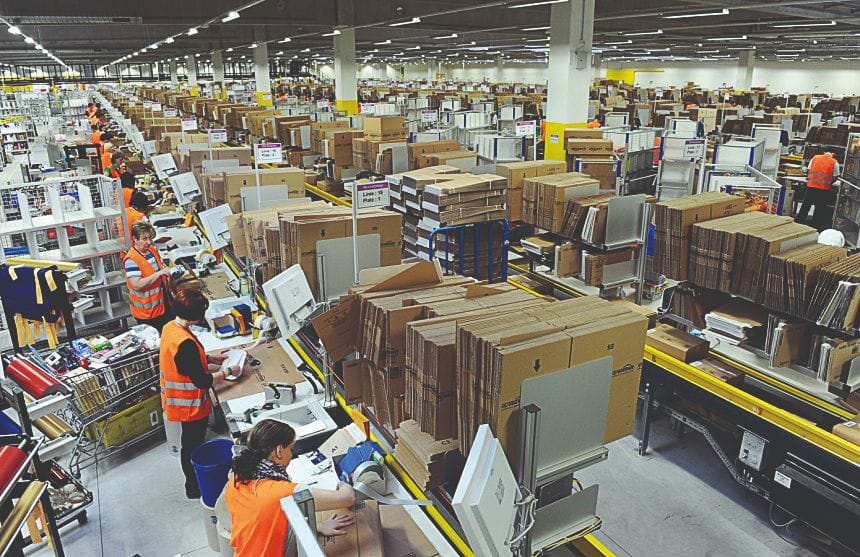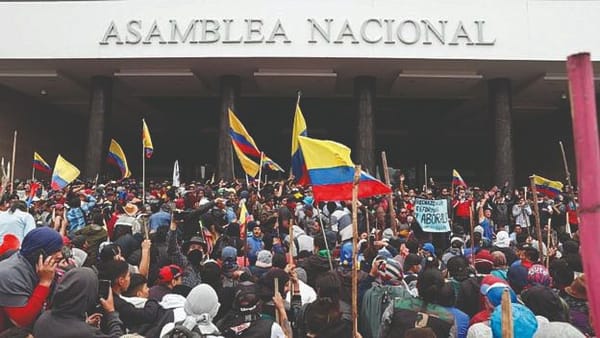What is Capitalism?, Part 1: Boss Makes a Dollar, I Make a Dime…
In the first segment of an 8-part political economic series: “What is Capitalism?”, we look at wage labour and the class divide

Capitalism: in its modern form, it’s the way the world works, and has worked, for the last 200 years. It shapes more than just our economic life but encroaches on our politics, our climate, our culture, our very psychology. Although it dictates our lives, it can still remain a mystery to many of us, with many key ideas locked away in dusty tomes from the 19th or 20th centuries. In this series, I hope to make these ideas more accessible and answer the question: What is Capitalism?
The word itself makes us think of corporations and consumerism, markets and money. But the pre-eminent aspect of capitalism is the relationship between a worker and their employer. The employer enters into an agreement with the worker whereby the worker sells their labour power, i.e. their capacity to perform labour, in exchange for money in the form of wages, whether they be determined on an hourly or yearly basis.
This relatively simple concept is referred to as ‘wage labour’ by political economists. However, there are logical consequences to such a system that may not be immediately obvious. For example, let’s say you work for a company, at a chair factory. They agree to pay you £10 per hour of your working time. This time is where you use your labour power to perform labour. It doesn’t matter how much or how well you work, you get paid a fixed wage. But why should a company agree to pay you £10 an hour for the labour you perform in that time? What’s in it for them?
The labour you perform generates value – in this case, taking the raw materials (wood) and adding value to it by performing your labour on it and turning it into a chair. The chair is worth more than the raw wood because of the work you put in to it, and now the employer can sell the chair for a higher price. Every hour, you work on chairs and add value to the wood. If your labour is contributing less than £10 an hour of value, the employer is making a loss by paying you £10 an hour to work at the factory - they would simply terminate the contract and bid you adieu. If you are contributing exactly £10 an hour of value, the employer is not making a profit or a loss – they may as well do nothing. This leads to a logical, yet stunning conclusion: you are contributing more than £10 an hour of value (say £25 an hour), and the ‘surplus value’ (£15 an hour) is being pocketed by the employer as profit.

This profit was generated by the worker yet is kept by the employer who has performed no labour. This idea of surplus value doesn’t just apply to factories and the manufacturing industry, but to all industries. Whenever you are working a job, you are generating more value for the company than the company is paying you (if this were false you would no longer be working there!). This value is then taken by the owners of the business, i.e. the shareholders, as dividends. Shareholders hold shares due to their investments into the company, and their ability to make investments comes from their wealth: that is to say, capital. These are the capitalists that give their name to capitalism.
Economists have come to differing moral judgments on this relationship. Some describe it as fair, arguing that the profits are well deserved rewards of capitalists who have taken a risk by investing their capital into a business, and that as workers enter into wage labour ‘voluntarily’, it cannot be called unjust. Many others argue otherwise, identifying wage labour as an exploitative system where capitalists leech off labourers, who, due to socio-economic factors arising from other aspects of capitalism, have no choice but to perform wage labour to survive.
This is where the idea of economic class comes in: capitalists are, by definition, an elite minority class, and workers are the subjugated majority class. Critics of capitalism define the working class as the group of people that have no wealth/capital to live off and are thus are made to sell their labour power to survive and meet their material needs. Meanwhile the capitalist class have wealth, and can use that wealth to purchase land, factories, offices, commodities. These things are what labourers work with in order to produce goods and create services for the capitalist to sell, and are collectively referred to as the ‘means of production’ and are owned by the capitalist, not the worker. By investing capital, hiring workers, and the surplus value of the workers’ labour as profits, the capitalist can live off their wealth without having to perform any labour. This is what divides the working class from the capitalist class.
While we have looked at the worker-employer relationship in an isolated sense, there are further questions to consider. Why is wage labour viewed as an involuntary action? Where did the capitalist’s wealth come from? What does it mean for capitalists to ‘own the means of production’? What role does the state play in this? All this, and more, will be answered in next week’s article, where we will look at the concept of private property. Stay tuned!









